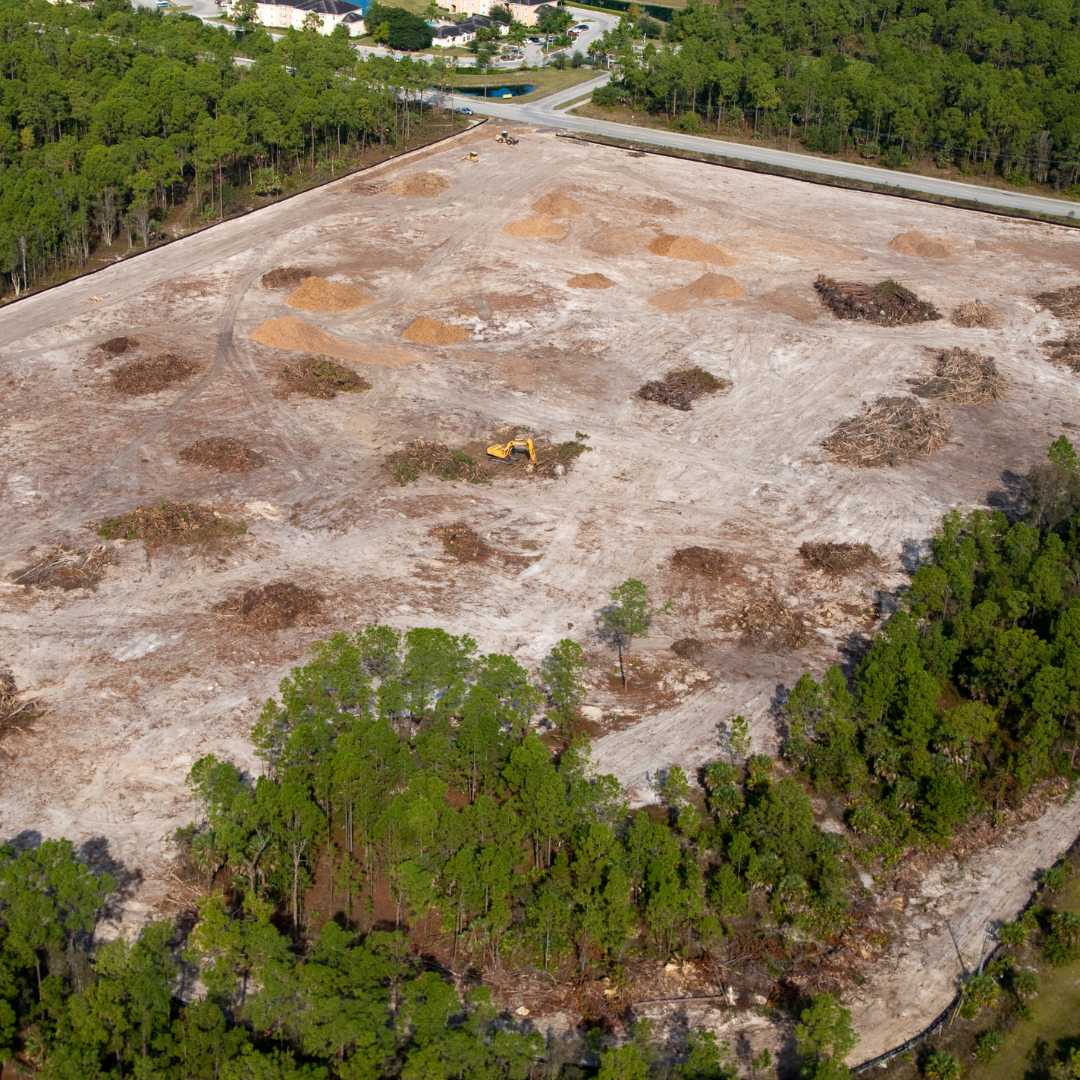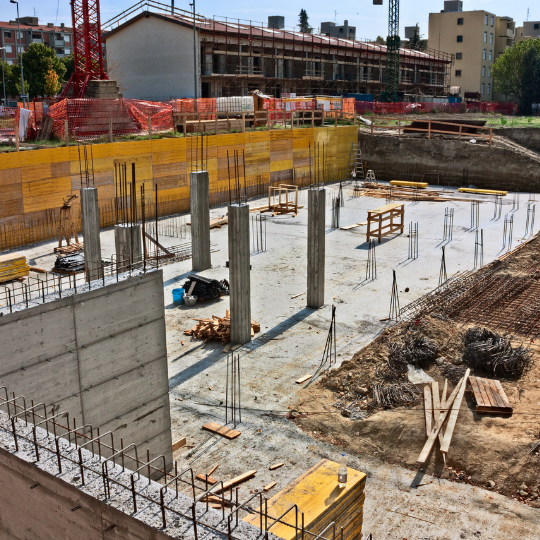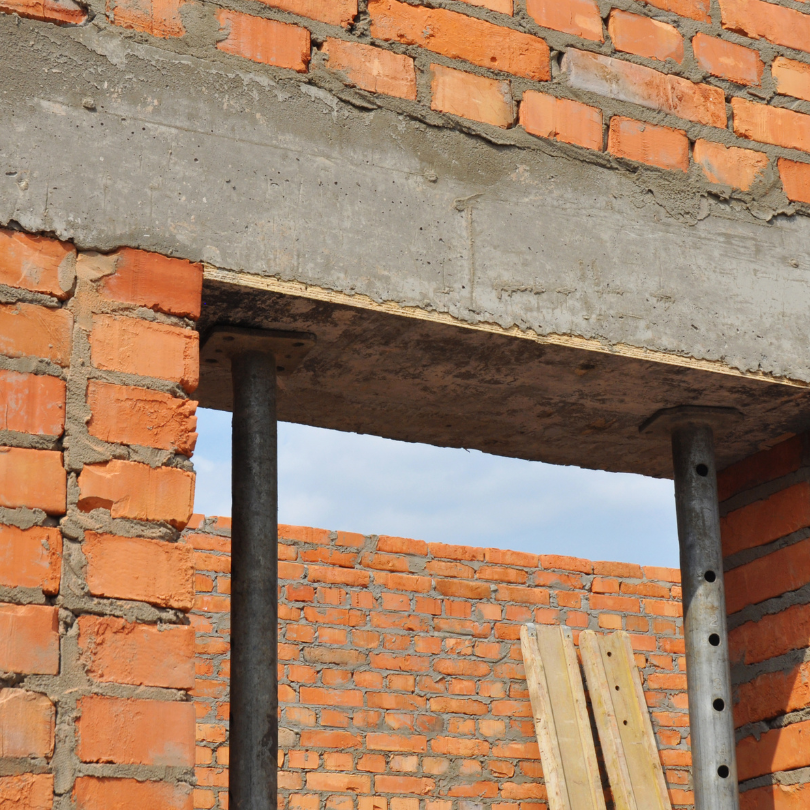Successfully erecting a building involves several stages, such as planning, site clearing, setting up the foundation, laying the slab, and completing other complex phases like brick masonry work and lintels before the external structure is complete.
After the planning stage, it is necessary to properly clear the site, which is the first physical step in dealing with elements that may hinder a construction project.
Here's everything you need to know about site clearing when planning to construct a building.
What is site clearing?

Site clearing is the structured process of removing waste, unwanted buildings, debris, hazardous materials and top soil from a planned building site. The process ensures that any physical obstacles and messes on a building site are cleared in preparation for the work to come.
Site clearance may involve levelling the surface of the ground and preparing it for the planned structure.
Site clearing generally involves making sure that a stretch of land is free from hazards so that construction professionals can start building from a blank canvas and prepare the land for the desired use.
The process leverages the use of heavy machinery, a skilled team of clearance professionals with the expertise to operate the needed equipment, and the means to safely and legally dispose of waste material.
For smaller projects like residential buildings, manual manpower is enough to clear a site. Minimal tasks are possible with manual manpower, examples being removing top soil and clearing vegetation.
Why is site clearing important?

Site clearing is important because it prepares a construction site by clearing it of any pre-existing buildings, waste material, and debris. The process also includes clearing a building site of topsoil which cannot be built on.
Site clearing is a necessary part of building before any excavation or construction work is started.
Topsoil is known to be less rigid and can contain substances that cause plant growth. Any vegetation growth can compromise the rigidity and structure of buildings upon the surface over time.
Land clearance is paramount to short- and long-term safety if a plot of land is contaminated, making it a safe and effective way of preparing land for new projects. After a building site has been successfully cleared, it is ready for the next stage of preparation before the actual construction process can begin.
Do you need a license and permission from authorities?

There are some legal requirements involved with site clearance. Experts recommend seeking out household names in the construction industry with a strong history.
Many agencies are fully licensed by government authorities to handle, remove, and safely dispose of waste, in addition to sending it to a similarly licensed waste landfill qualified to handle hazardous waste.
However, you may need a license from a local planning authority for the site itself, particularly if your clearing might involve cutting down trees placed under protection.
Consult local construction experts and other people who have built within the area of your planned construction to note the legal and ethical requirements enforced by local authorities.
What does the site-clearing process entail?

here are a few key activities and decisions that take place to facilitate any site-clearing process. These include:
- Planning for the entire scope of the site clearing.
- Determining key risks and their respective mitigating actions.
- Assessing existing ground conditions.
- Identifying the most effective and efficient methods of carrying out the work.
- Determining waste disposal routes.
- Assessing potential effects on the environment and working out the correct means of handling them.
- Engaging stakeholders, working out permits, licenses and regulatory constraints.
- Physical site clearing activities.
What happens after site clearance?

After waste materials, debris, and unwanted structures have been cleared, it is important to assess the materials set to be discarded.
This is necessary to determine what can be recycled and reused in the building project or another one that can maximize the use of materials cleared from the planned building site.
Recent legislative and ethical challenges mean that many construction agencies and clearance professionals seek to recycle as much as possible with the aim of caring for the environment and preventing needless waste.
Classifying hazardous waste

If there was hazardous waste at a site that was cleared, it is important to separate and classify hazardous waste so that it can be properly disposed of.
Clearance experts classify and categorize hazardous waste materials based on properties such as physical, biological, and synthetical.
Such classification may apply to materials like batteries, pesticides, bottled substances, and asbestos. Qualified clearance professionals dispose of all these types of waste with the necessary adherence to the set safety regulations.
As a result of the potential for hazardous materials being cleared from a building site, all workers and bystanders are expected to wear protective clothing, hats, and shoes to ensure that no injuries occur during the process.
The site is also expected to be covered with appropriate signs, boundaries, and first aid equipment to prioritize the safety of all people at the building site.
How long does site clearance take?
Clearing a construction site generally depends on the size of the area, the type of land-clearing operations deemed necessary, and the type of waste found on the site. The rate of work also depends on the resources used such as machinery and human manpower.
Professionals typically take between two and three hours to clear an acre of land, which is a good industry benchmark when creating timelines for different construction projects.
Conclusion
Site clearing is an integral part of the construction process because it involves getting rid of physical elements that may interfere with erecting a building at a particular location.
During site clearing, a plot of land is cleared of any existing buildings, debris, waste material, and the surface layer of topsoil. This allows building activities to take place on a neat and clean piece of land, making the whole process as frictionless, safe, and orderly as possible.
Professional site clearance services can vary wildly in cost, depending on factors like the size of the land, its physical location, and the amount of waste and unwanted material to be removed.
Contact your local experts to get an idea of what it may cost you to do site clearing for your plot of land.






Leave a comment
This site is protected by hCaptcha and the hCaptcha Privacy Policy and Terms of Service apply.